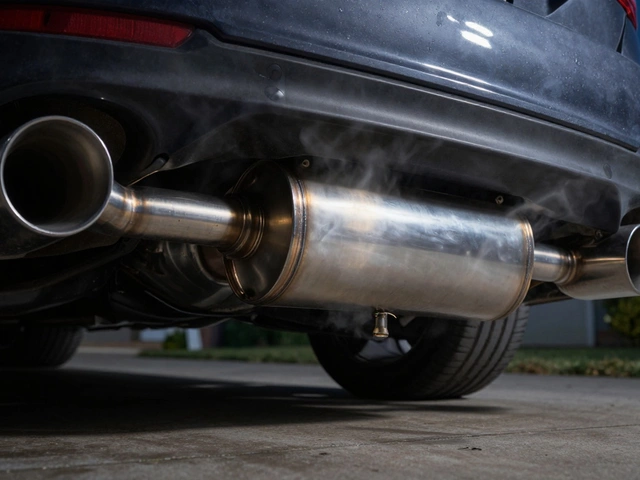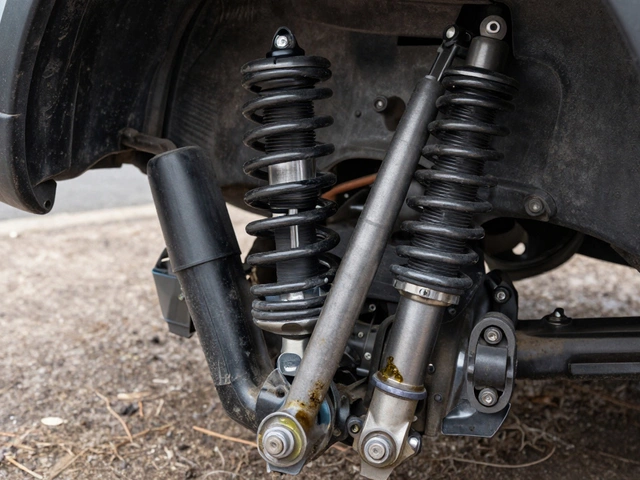If you’ve braved a hot summer behind the wheel, juggling carpool duty and late-night grocery runs, have you ever stopped to wonder if those tiny spark plugs in your engine can really soldier on for half a decade? There’s a lot of buzz about modern plugs lasting longer than an old-school Nickelback haircut, but does the reality match up? Car forums light up every week with ‘my spark plugs made it 6 years!’ posts, but you’ll see just as many engine horror stories. The journey to the truth has some surprising twists, riddled with myths—and a few landmines you’d rather avoid if you want both your engine and your wallet to thrive.
What Actually Decides a Spark Plug’s Lifespan?
Don’t get fooled by assumptions: Spark plug life isn’t a pure numbers game. Sure, you’ll read that iridium or platinum plugs last “up to 100,000 miles” on the marketing slicks, but real-world driving throws plenty of curveballs the way those salespeople never mention. Here’s a brutally honest secret—your driving habits matter more than that fancy alloy tip.
Short trips are murder on spark plugs. If your typical drive is a hop to daycare and a sprint to the office (like my daily Detroit grind), your engine barely gets warm enough to burn off carbon. That gunk builds up fast. Take it from an actual case: A friend with a 2018 Honda Civic had to swap plugs at just 42,000 miles after months of two-mile commutes. Not the automaker’s fault; that’s what all that cold-starting will do. Engines love long, steady highway miles—these are a spark plug’s dream. Five years can go by with barely any wear if you’re racking up mellow road trips instead of hour-long traffic crawls.
Quality matters too, but not as much as you’d think. Let’s lay down some facts: Copper plugs are cheap (cheaper than pizza night if you buy them online), but they’ll bow out after 20,000-30,000 miles in most engines. Platinum? You’re looking at 60,000+ before symptoms kick in. And the holy grail—genuine iridium—might see 100,000 miles or more, but only if car care is your religion. “We see plugs well beyond 90,000 miles—but only if maintenance schedules are followed,” says auto tech Bob Kelly at AAA. Even spark plug wire quality, ignition coil health, and fuel type play a part. Bad injectors or old-school, two-dollar gasoline can shave precious months off your spark plug’s lifespan.
Warning Signs: How to Know When It’s Time
Before you toast a five-year anniversary for your spark plugs, know the signals that things are going downhill. It’s all about listening—to your car, not just the odometer. Here’s the thing: Most plugs don’t just die one day. They fade, leaving you a trail of clues. The trick is knowing what to watch for before you end up stranded in the rain with a kid in the back seat (learned that the hard way on a rainy night with Jareth after soccer practice).
Classic warning signs? An engine that shakes at idle, feels sluggish, or stumbles when you try to pass someone on the highway. Fuel economy can drop—your monthly gas bill becomes a real eye-opener. For many cars built after 2012, a check engine light usually pops on. If you plug in a cheap OBD-II reader, you might see a code like P0300 (random misfire) or something more specific, like P0301 for cylinder 1. Ignoring these can let raw gas slip into the catalytic converter, making a $80 spark plug job mutate into a $1,200 repair.
- Slow or rough starting
- Poor acceleration
- Unusual engine noises (popping, pinging)
- Noticeable drop in miles per gallon
- Visible plug wear: rounded electrodes, black carbon, or white ash deposits
Got a new car with iridium plugs? Don’t get lulled into ignoring basic checks. The five-year mark isn’t magic—it’s just a ballpark. Life throws variables at engines—right down to air filter clogs or a leaky valve cover, both of which can take years off your plugs.

Can DIY Maintenance Help Spark Plugs Last Five Years?
Car care is one of those things that gets pushed to the bottom of the list, right between ‘start jogging’ and ‘paint the bathroom.’ But if you want those spark plugs to see their fifth birthday, rolling up your sleeves pays off. Start with basics: Stick to clean fuel, change out your air filter every year, and avoid cheap gas from random roadside stops. I always fill up at stations with lots of traffic—they typically use fresher, higher-quality fuel blends.
Every spring, spend a minute under the hood. Just a quick look at plug wires, ignition coils for any cracking or corrosion, and a sniff check for fuel leaks. Spritz some electrical contact cleaner if you see grime building up. These tiny details aren’t glamorous, but trust me, they work. “DIY car owners can catch plug issues early by simply looking for cracked boots or damaged plugs—even a flashlight sweep once a season can make a difference,” says Chris Mooney, longtime video tech over at CarTalk. He’s right—a ten-dollar tool kit can save hundreds if you head off problems before they hit hard.
One more thing: If you’re changing plugs yourself, always use a torque wrench. Hand tightening is risky, especially with today’s aluminum cylinder heads. I learned the hard way after breaking a plug that cost me an entire afternoon in the driveway, with Jareth handing me wrenches and asking way too many questions. Follow the manufacturer’s torque specs, dab a little anti-seize on the threads (unless the plug maker says not to), and seat that plug just so. Skipping the torque step can ruin both the plug and the engine.
Spark Plugs Myths, Truths, and Real-World Experiences
This topic is loaded with strong opinions—the online world is full of drivers swearing their plugs last forever, and others warning that stretching change intervals will turn your Toyota into a lawn ornament. Let’s unpack a couple myths and surprising facts.
First myth: Premium plugs mean no worries. Nope. Even the best iridium spark plug is only part of a system—bad wires, weak coils, carbon build-up, or oil leaks can all sabotage plug life. Second: If your car runs fine, the plugs must be good. Wrong again. Modern engines are masters at hiding problems by compensating with more fuel or ignition advance. By the time you feel it, damage could be done. Some top techs recommend pulling and checking plugs well before the automaker’s interval, just for peace of mind. “We see plugs fouling or breaking down early if oil seeps past the valve cover—as little as a tablespoon per thousand miles,” says Dave Harvey, local shop owner in Michigan. Bad valve cover gaskets are sneaky and ruin plugs way early.
Now the big truth: There really are drivers going 100,000 miles or more on great plugs, with no hiccups. You know what they all have in common? Good maintenance, regular check-ups, and a little mechanical luck. Want a real-life success story? My neighbor, Vanessa, hit the 110,000 mile mark on her original iridium-tipped plugs in a 2014 Lexus RX, mostly doing highway drives and sticking to every oil change religiously. I’ve seen the opposite too. A buddy ignored his Accord’s weird surging, only to shred the insides of three plugs with burnt electrodes at year three. Don’t risk it if you want your car to last longer than your smartphone.
“The advertised lifespan for spark plugs is only a guideline—real durability is shaped by engine condition, fuel quality, and routine care. Even the best plugs can’t overcome neglect.” — John Ibbotson, Consumer Reports Chief Mechanic

The Smartest Approach for Your Car (and Your Wallet)
If you want to play it safe and smart, check your car’s owner’s manual for the official replacement interval. For many modern cars, it falls anywhere from 60,000 miles (for platinum) to 100,000 miles (for the best iridium plugs). But remember, these are ideal numbers. If you’re parking outside in freezing winters or heatwaves, or mostly stuck in city grids, consider checking (and maybe replacing) plugs every 4-5 years regardless of mileage.
Before you book that service, ask your mechanic to inspect—not just swap—your spark plugs. That way, you’ll catch early signs of abnormally quick wear. Want something even cheaper? Invest in a quality OBD scanner; these little gadgets can catch misfires or rough running long before you feel them. The cost? About as much as a fancy dinner night for two, and it pays for itself in peace of mind. I keep one in my glovebox just because Amelia always feels safer when we’re travelling with Jareth on long summer trips.
If you’re a do-it-yourselfer, save old plugs and study them. Carbon-coated tips? Maybe your air filter is overdue for a change. Oil fouling? Look into valve seals or piston rings. White, crusty insulators mean your engine might be running hot or lean. These little autopsy lessons help unlock what’s going on inside your engine, preventing problems five years down the road.
Bottom line? Spark plugs can last 5 years—sometimes far longer—but only with good habits, a watchful eye, and some honest assessment of how you really drive. Don’t wait until something breaks or you’re standing in a rain-soaked parking lot with your hood up and a crying kid to check a $6 part. Swap them when it makes sense, not just by the number printed in the manual. Your car—and your wallet—will thank you in the long run. It’s a small effort that makes a big difference.








